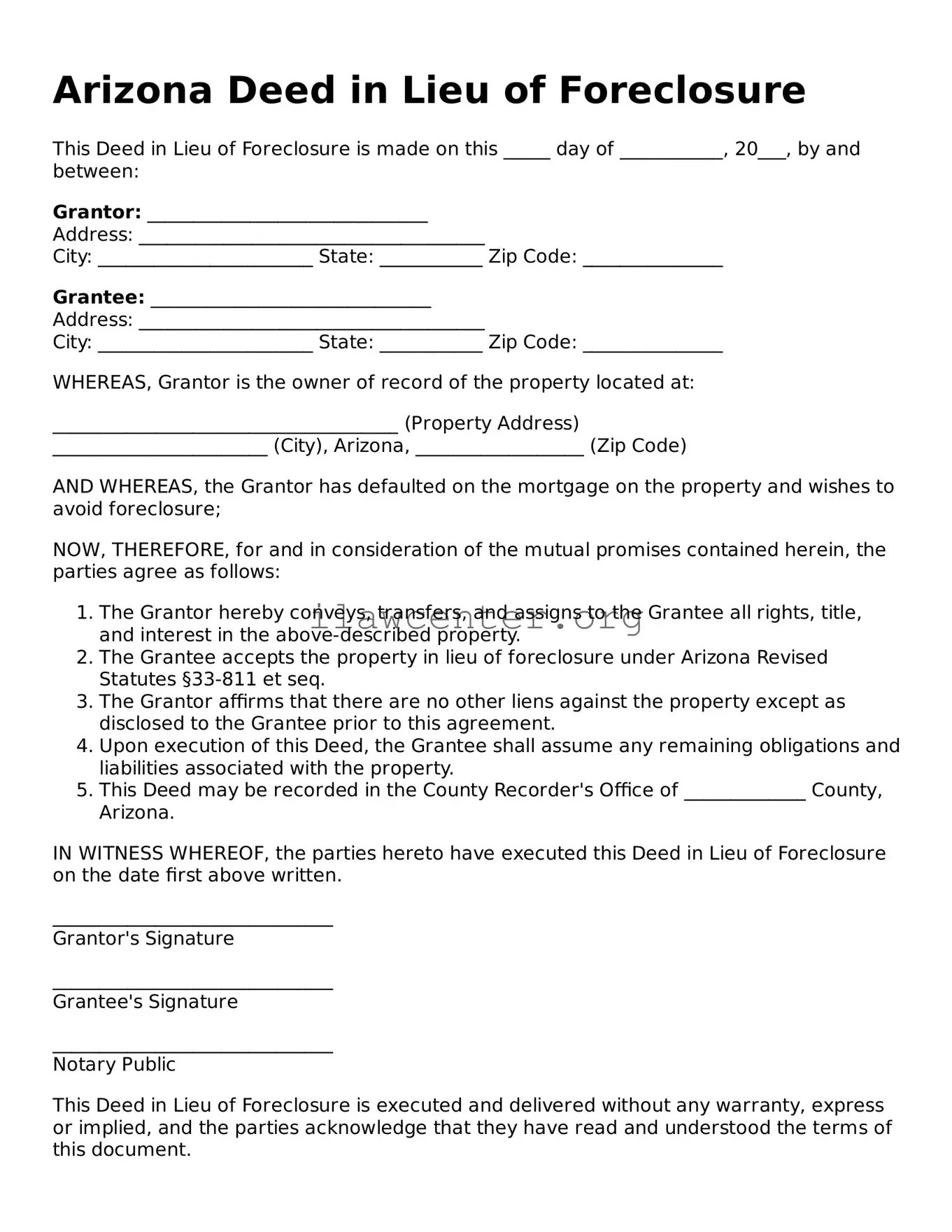What is a Deed in Lieu of Foreclosure?
A Deed in Lieu of Foreclosure is a legal document that allows a borrower to transfer ownership of their property to the lender. In exchange, the lender agrees to forgive the remaining mortgage debt. This process can serve as an alternative to the more lengthy and complex foreclosure procedure.
How does a Deed in Lieu of Foreclosure work?
In a Deed in Lieu of Foreclosure, the property owner voluntarily transfers the title of their property to the lender. This transaction generally happens when the borrower is facing financial difficulties and cannot continue making mortgage payments. After the transfer, the lender typically releases the borrower from their financial obligations. It's advisable to engage with the lender to understand the requirements and implications fully.
What are the benefits of using a Deed in Lieu of Foreclosure?
Utilizing a Deed in Lieu of Foreclosure can offer several advantages. It can provide a quicker resolution compared to foreclosure, help the borrower avoid court proceedings, and lessen the negative impact on their credit score. Additionally, it allows the borrower to part ways with the property and debt in a more dignified manner.
Are there any downsides to a Deed in Lieu of Foreclosure?
Yes, there are some potential downsides. The borrower's credit score will still be affected, although typically not as severely as in a foreclosure. Moreover, the lender may not agree to the Deed in Lieu if there are other liens on the property or if the borrower hasn't tried other loss mitigation options first. Always consult with a financial advisor or attorney to discuss specific circumstances.
Can I change my mind after signing a Deed in Lieu of Foreclosure?
Once you have signed a Deed in Lieu of Foreclosure, it generally cannot be undone. The transfer of ownership becomes effective immediately upon recording with the county. It's crucial to be certain about your decision before proceeding with this option. Discuss with professionals to weigh all possible scenarios.
What steps do I need to take to initiate a Deed in Lieu of Foreclosure?
To initiate a Deed in Lieu of Foreclosure, start by contacting your lender. Inform them of your situation and express your interest in this option. They will likely require specific documentation. You may need to submit a hardship letter, financial statements, and possibly other forms to evaluate your eligibility. Be prepared to discuss your financial situation openly.
Will a Deed in Lieu of Foreclosure affect my ability to buy another home in the future?
Yes, a Deed in Lieu of Foreclosure can have an impact on your ability to secure another mortgage. It may remain on your credit report for up to seven years. However, lenders might view it more favorably than a full foreclosure, potentially allowing you to qualify for financing sooner than you would after a foreclosure. Your overall financial situation and credit history will play significant roles in any future mortgage approval.
What happens if there are other liens on the property?
If there are existing liens, such as second mortgages or tax liens, a lender may be less inclined to accept a Deed in Lieu of Foreclosure. The lender generally requires a clear title to proceed. To address any existing liens, you may need to negotiate with lien holders or consider alternate options to settle those debts before proceeding with the Deed.
Is legal assistance recommended for this process?
Yes, obtaining legal assistance is highly recommended. An attorney can guide you through the complexities of the process, ensuring that your rights are protected. They can provide valuable insights about the implications of a Deed in Lieu of Foreclosure and help you navigate discussions with your lender. Professional advice can make a significant difference in achieving a favorable outcome.
